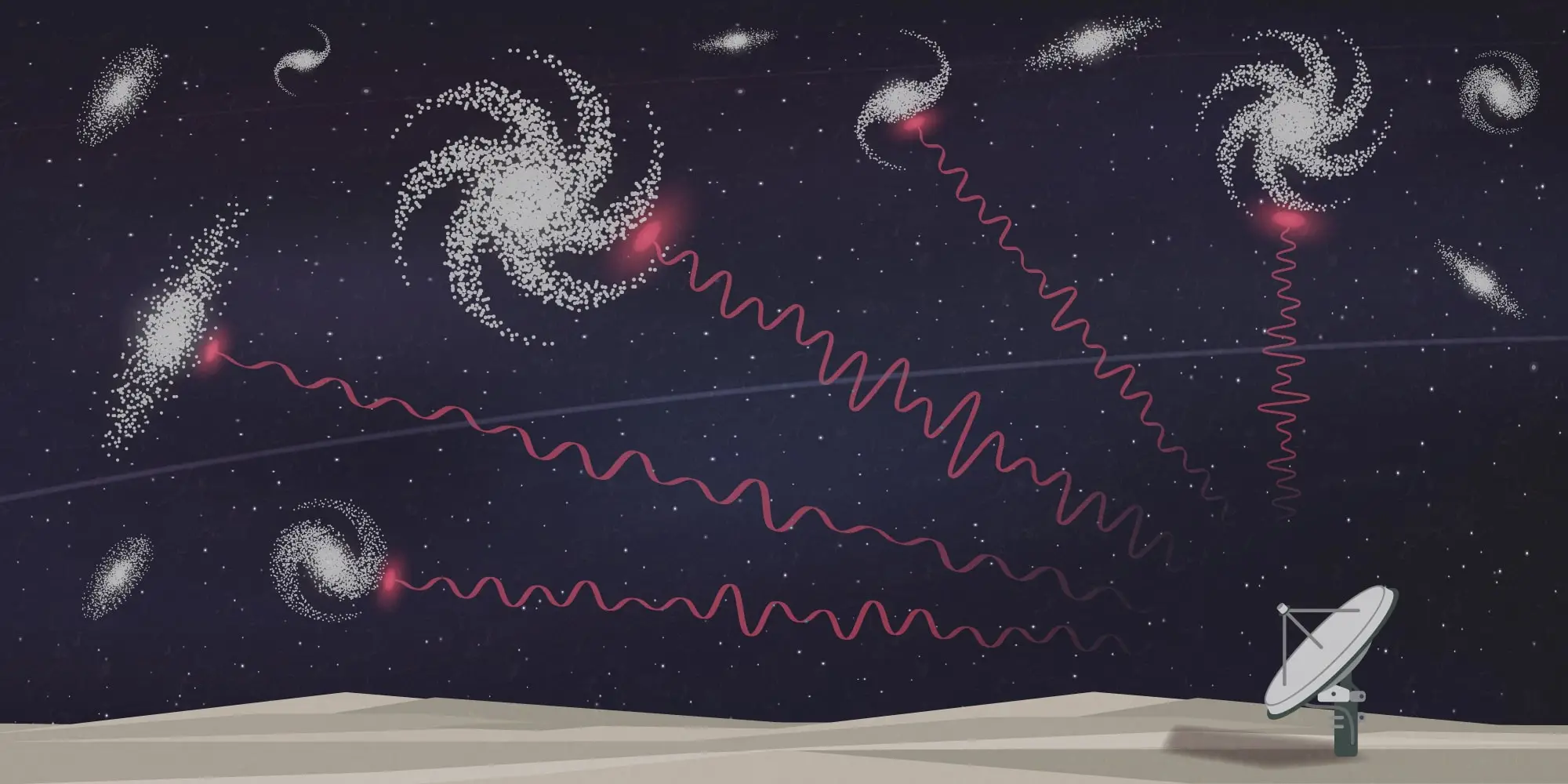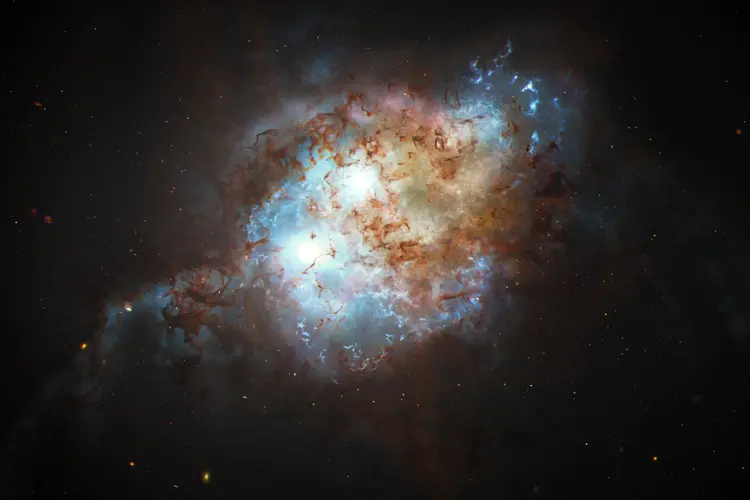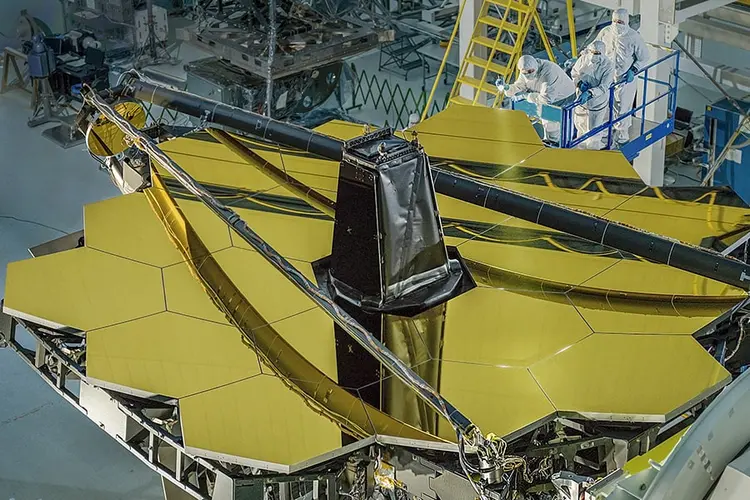
Radio Telescopes' Earthbound Perspective Clouds Discovery of Fast Radio Bursts
Media Inquiries
Carnegie Mellon University researchers have discovered that there’s not only a bias in how telescopes ‘see’ but also in how they ‘hear.’ The findings, published in Nature(opens in new window), have implications for studying fast radio bursts.
Fast radio bursts, millisecond blasts of energy from deep space, are one of astronomy’s greatest mysteries. They hit the Earth roughly every minute, but their origins are still unknown. The latest research from Carnegie Mellon has found that, like optical telescopes that are more likely to detect brighter objects, radio telescopes tend to detect fast radio bursts (FRBs) from galaxies that fully face the Earth.
“In the universe, galaxies do not have a preferred orientation, so from Earth we should view them at random angles,” said Mohit Bhardwaj, a postdoctoral fellow at Carnegie Mellon’s McWilliams Center for Cosmology and Astrophysics(opens in new window). “But when we studied a sample of galaxies from which FRBs have come, we discovered an excess of face-on galaxies and a paucity of edge-on galaxies.”
Face-on and edge-on galaxies are not different — they only appear that way because of the angle at which they are seen from Earth. It’s similar to looking at a coin in a palm or at a coin being placed in the slot of a vending machine. By preferentially detecting FRB signals from face-on galaxies, Earthbound telescopes introduce a selection bias that excludes FRBs from edge-on galaxies. According to Bhardwaj, this leads to a significant underestimation of the FRB rates reported in the literature.
“This inclination-related selection bias is purely observational,” Bhardwaj said. “It’s not that FRB sources are inherently less likely to exist in edge-on galaxies compared to face-on galaxies.”
Their analyses revealed that the estimated rate of FRB production in the universe has been underestimated by a factor of at least two. That means that FRBs are more abundant and more frequent than initially thought, a finding that puts stress on current FRB models.
Astronomers are keen to understand the elusive origins of FRBs. By identifying their sources, astronomers can gain new insights into the extreme astrophysical conditions that give rise to these signals, and the physical mechanism responsible for them. There are several theories for what could be producing FRBs, Bhardwaj said, and the newly discovered selection bias has implications for all earlier work.
“We now need to revisit all the analyses that we have done and take into account this inclination-related selection bias and then see whether the conclusions we have drawn still make sense,” he said.
Bhardwaj and Jimin Lee, a junior at Carnegie Mellon and co-first author on the Nature paper, carried out extensive analyses using different mathematical and statistical tools to determine the inclination angles of 23 FRB host galaxies. They used data from the Dark Energy Spectroscopic Instrument (DESI) survey and the Panoramic Survey Telescope and Rapid Response System (Pan-STARRS) survey. They also looked at optical images of randomly selected galaxies from the Sloan Digital Sky Survey to rule out an intrinsic bias in the universe.
Their analysis supports the hypothesis that the majority of FRB sources are associated with the disks of their host galaxies, where ongoing star formation likely plays a key role in their origin. This provides a key piece of evidence in a long-standing debate about whether FRBs originate primarily from young, highly magnetized neutron stars or from globular clusters, which are very old stellar populations that surround the halo of the Milky Way galaxy.
Bhardwaj said any targeted, follow-up studies looking at the rates at which different environments form FRBs — such as observations of nearby star-forming galaxies or galaxy clusters — would need to account for this newly identified inclination-related bias.
As for what is causing the inclination-related selection bias, Bhardwaj proposes that FRB signals are scattered as they pass through clumps of ionized gas distributed throughout the host galaxy. If the FRB signal is passing through a larger fraction of the host galaxy, there are more chances that the signal will be scattered and weakened. In face-on galaxies, the signal wouldn’t have to travel through as much of the galaxy, so there is less chance of it weakening. But for edge-on galaxies, FRBs are covering a larger fraction of distance so there are more chances for it to interact with ionized clumps of gas and get scattered, weakening it so much that telescopes can’t detect it.
In addition to Bhardwaj and Lee, Carnegie Mellon junior Kevin Ji was involved with the research, which began as an undergraduate research project.


